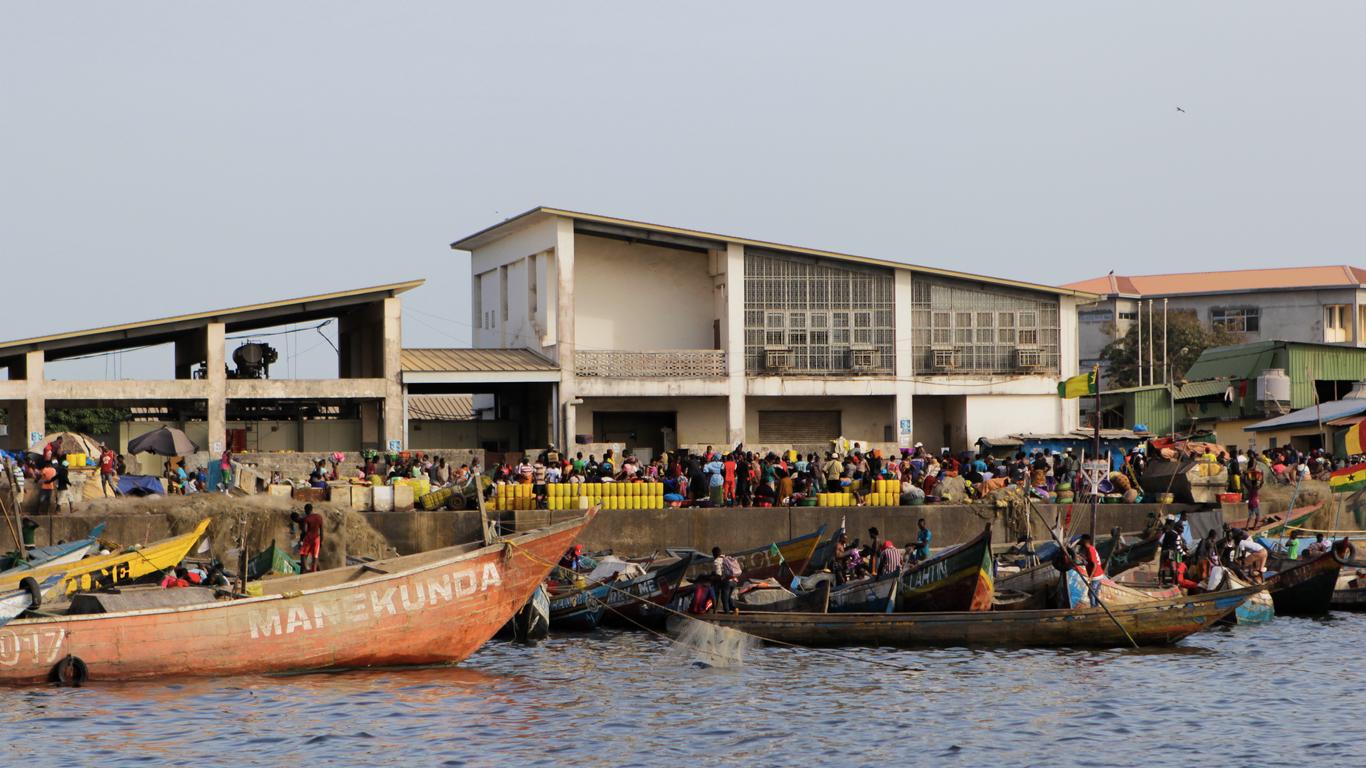Sprawling along the Kaloum Peninsula as it juts into the North Atlantic Ocean, Conakry serves as the economic, financial and cultural heart of Guinea. It was originally founded on Tombo Island when the British ceded it to France in 1887 and boomed following the country’s independence in 1958. It’s home to a monumental mosque and several colourful markets and serves as a gateway to the picturesque Loos Islands.
Things to do in Conakry
Delve into the local history at the Sandervalia National Museum, which houses a large collection of artefacts from various ethnic groups across Guinea. Browse the model houses, masks and musical instruments on display, together with statues depicting some of the nation’s most prominent cultural and political figures.
Dominating the city is the immense Conakry Grand Mosque, which was built under the reign of Ahmed Sékou Touré and stands as the largest mosque in Sub-Saharan Africa. It can accommodate up to 12,500 worshippers inside and an additional 12,500 people on its large esplanade. The adjacent gardens feature the tombs of national heroes, such as Alfa Yaya and Samori Ture.
If you want to escape the hustle and bustle of Conakry, jump aboard a boat to the Loos Islands, a small archipelago that’s home to blissful beaches, rocky coves and the former penitentiary of Fotoba. Spend your days swimming, kayaking or hanging out with the local villagers before feasting on fresh seafood plucked from the North Atlantic Ocean.
Getting around Conakry
Conakry Gbessia International Airport is the main gateway to the city and is located around 20 minutes’ drive from the centre. Long-distance buses connect Conakry with destinations across Guinea. Mini-buses are the main means of getting around the city and private taxis are also readily available.





